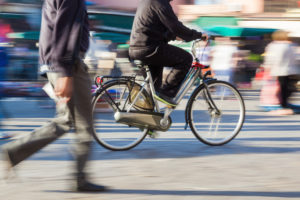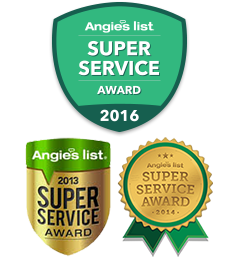 Spring has arrived, the weather is getting warmer, and that means pedestrians and cyclists are coming out of hibernation and they’re on the streets and sidewalks. It may be wet, which means lower visibility and slicker roads.
Spring has arrived, the weather is getting warmer, and that means pedestrians and cyclists are coming out of hibernation and they’re on the streets and sidewalks. It may be wet, which means lower visibility and slicker roads.
In order to prevent or appropriately handle pedestrian and cyclist collisions, keep the following in mind.
Driver Safety Tips
Although pedestrians and cyclists have their own set of safety rules, as a driver, you’re the one who would be held responsible in the case of an accident. So, keep the following list in mind when you’re driving through towns and cities.
● Drive slowly when crossing sidewalks or pulling into our out of driveways. You may cross paths with children or others who have the right of way.
● When turning at an intersection, first check for oncoming traffic, then check for cyclists and pedestrians before you turn.
○ When turning left, it’s especially important to check for oncoming cyclists, and to look to your left for pedestrians.
○ When turning right, be aware of cyclists coming behind you (they should be on your left, but may not always be) and to look for pedestrians crossing at the light.
● Never pass a vehicle that is stopped at a crosswalk; you may not see the pedestrians crossing in front of them.
● If you see a vehicle pulled over or parked on the side of the road, leave enough room for a door to open or a pedestrian to enter or exit the vehicle, just in case they do.
● Keep a safe distance between you and the vehicles around you. Potholes or other road hazards can cause abrupt stopping or turning.
● When parallel parking, check your mirror before opening the door; approaching cyclists may not know you’re about to exit.
● If you can, fold your mirror in, especially on tight streets, when parallel parking so that cyclists have room to get by.
● Avoid distracted driving. Pedestrians and cyclists are already more difficult to see because they’re smaller than vehicles, so it’s up to you to stay focused on the road.
● Follow the speed limit. Driving too fast increases the likelihood that pedestrians and cyclists will misjudge the time it takes you to arrive at a crossing and the likelihood of an accident.
● Always use turn signals when turning or changing lanes so that other vehicles, pedestrians, and cyclists can see where you’re going.
● Always check your blind spot for cyclists.
● Only pass a cyclist when there is an open lane next to you; it is safe to pass a cyclist when it is safe to pass a vehicle.






